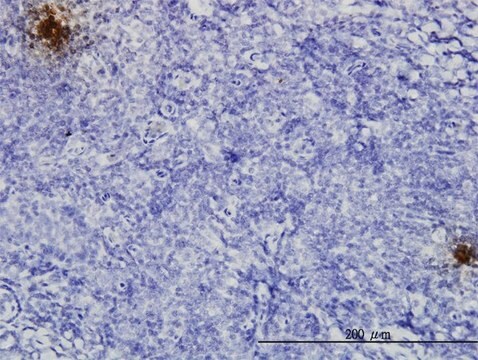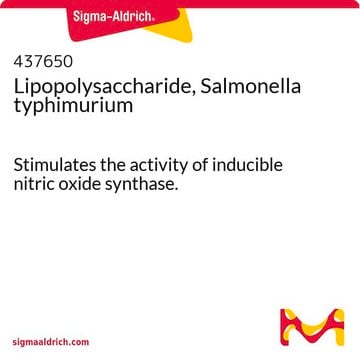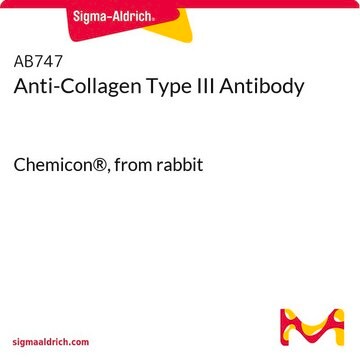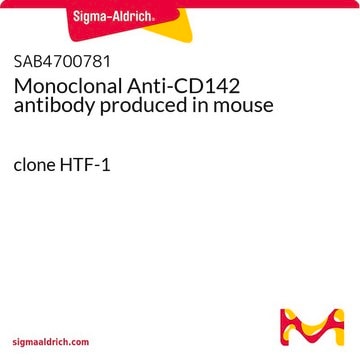612161
Anti-Tissue Factor Mouse mAb (TF9-10H10)
lyophilized, clone TF9-10H10, Calbiochem®
Sign Into View Organizational & Contract Pricing
All Photos(1)
About This Item
UNSPSC Code:
12352203
NACRES:
NA.43
Recommended Products
biological source
mouse
Quality Level
antibody form
purified antibody
antibody product type
primary antibodies
clone
TF9-10H10, monoclonal
form
lyophilized
does not contain
preservative
species reactivity
primate, human
should not react with
rabbit
manufacturer/tradename
Calbiochem®
storage condition
OK to freeze
isotype
IgG1
shipped in
ambient
storage temp.
−20°C
target post-translational modification
unmodified
General description
Purified mouse monoclonal antibody (see application references). Recognizes the tissue factor protein.
Recognizes the tissue factor protein.
This Anti-Tissue Factor Mouse mAb (TF9-10H10) is validated for use in Dot Blot, ELISA, FC, Frozen Sections, WB, IF, Paraffin Sections, Neutralization Studies for the detection of Tissue Factor.
Immunogen
Epitope: within extracellular domain
Human
purified apoprotein of human tissue factor
Application
Dot Blot (see application references)
ELISA (see application references)
Flow Cytometry (see application references)
Frozen Sections (see application references)
Immunoblotting (1:1000, see application references)
Immunofluorescence (see application references)
Paraffin Sections (see application references)
Neutralization Studies (not recommended)
ELISA (see application references)
Flow Cytometry (see application references)
Frozen Sections (see application references)
Immunoblotting (1:1000, see application references)
Immunofluorescence (see application references)
Paraffin Sections (see application references)
Neutralization Studies (not recommended)
Warning
Toxicity: Standard Handling (A)
Physical form
Lyophilized from 100 mM mannitol, 150 mM PBS, pH 7.4.
Reconstitution
Reconstitute lyophilized antibody with 0.5 ml sterile dH₂O. Aliquot and freeze (-20°C) for long-term storage. For short-term storage at 4°C, add 0.02% sodium azide. Avoid freeze/thaw cycles of solutions.
Other Notes
Specific for epitope locus I. Recognizes reduced and native, non-reduced human and primate tissue factor. This antibody does not inhibit coagulation or neutralize factor VII binding to TF. Significant reactivity with tissue factor from species other than human and primate has not been established. Antibody should be titrated for optimal results in individual systems.
Legal Information
CALBIOCHEM is a registered trademark of Merck KGaA, Darmstadt, Germany
Not finding the right product?
Try our Product Selector Tool.
Storage Class Code
13 - Non Combustible Solids
WGK
WGK 3
Flash Point(F)
Not applicable
Flash Point(C)
Not applicable
Certificates of Analysis (COA)
Search for Certificates of Analysis (COA) by entering the products Lot/Batch Number. Lot and Batch Numbers can be found on a product’s label following the words ‘Lot’ or ‘Batch’.
Already Own This Product?
Find documentation for the products that you have recently purchased in the Document Library.
Anna-Lena Berg et al.
Toxicologic pathology, 36(5), 727-737 (2008-07-24)
Dogs treated with AR-H047108, an imidazopyridine potassium competitive acid blocker (P-CAB), developed clinical signs of hepatic dysfunction as well as morphologically manifest hepatotoxicity in repeat-dose toxicity studies. An investigative one-month study was performed, with interim euthanasia after one and two
Yu Zheng et al.
Human reproduction (Oxford, England), 27(5), 1300-1313 (2012-03-10)
Mounting evidence shows that nuclear factor-κB (NF-κB) plays an important role in endometriosis. We therefore evaluated the therapeutic potential of andrographolide, an NF-κB inhibitor. Primary cell cultures were performed using ectopic endometrial tissue specimens and their homologous eutopic endometrial specimens
Julie Hardij et al.
Journal of extracellular vesicles, 2 (2013-11-14)
Extracellular vesicles (EVs) are shed from cells and carry markers of the parent cells. Vesicles derived from cancer cells reach the bloodstream and locally influence important physiological processes. It has been previously shown that procoagulant vesicles are circulating in patients'
Falgun Shah et al.
Cell chemical biology, 24(7), 858-869 (2017-07-04)
Cutaneous reactions represent one of the most common adverse drug effects observed in clinical trials leading to substantial compound attrition. Three negative allosteric modulators (NAMs) of metabotropic glutamate receptors (mGluRs), which represent an important target for neurological diseases, developed by
Our team of scientists has experience in all areas of research including Life Science, Material Science, Chemical Synthesis, Chromatography, Analytical and many others.
Contact Technical Service








